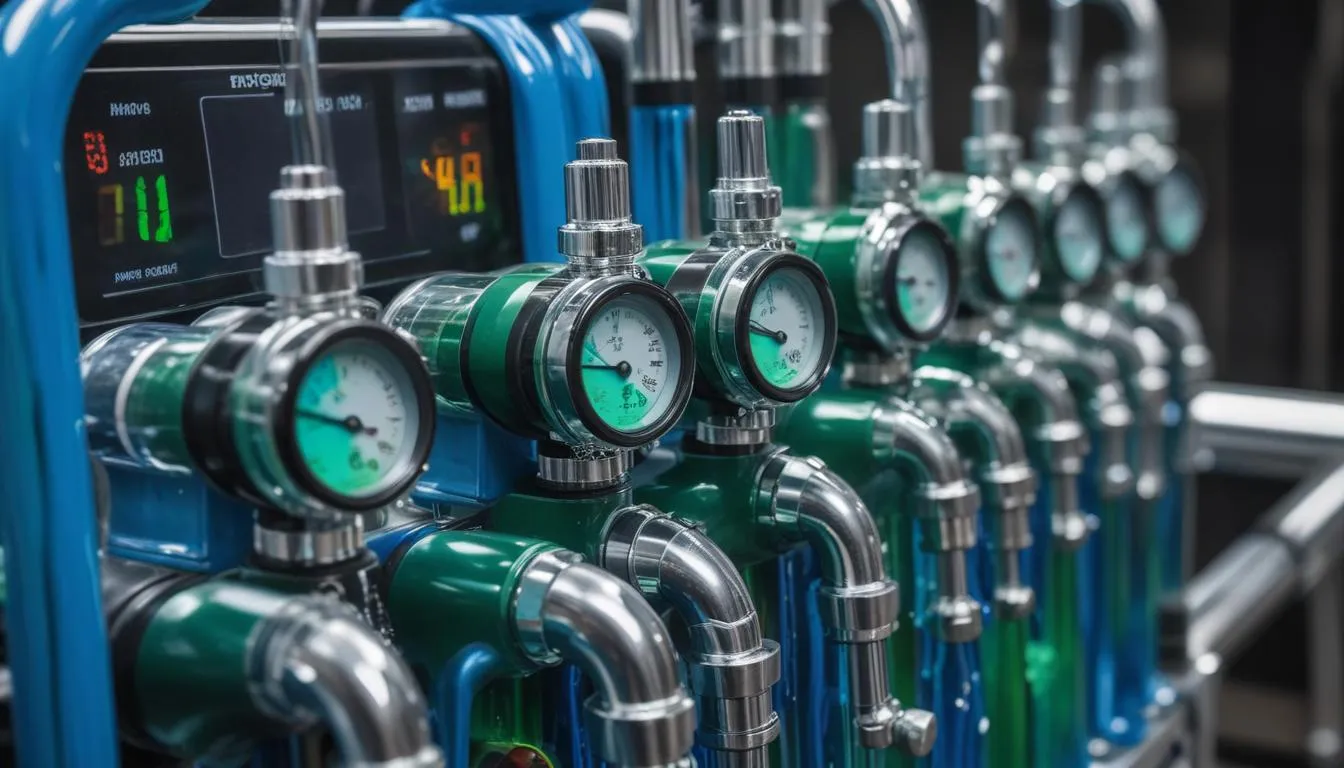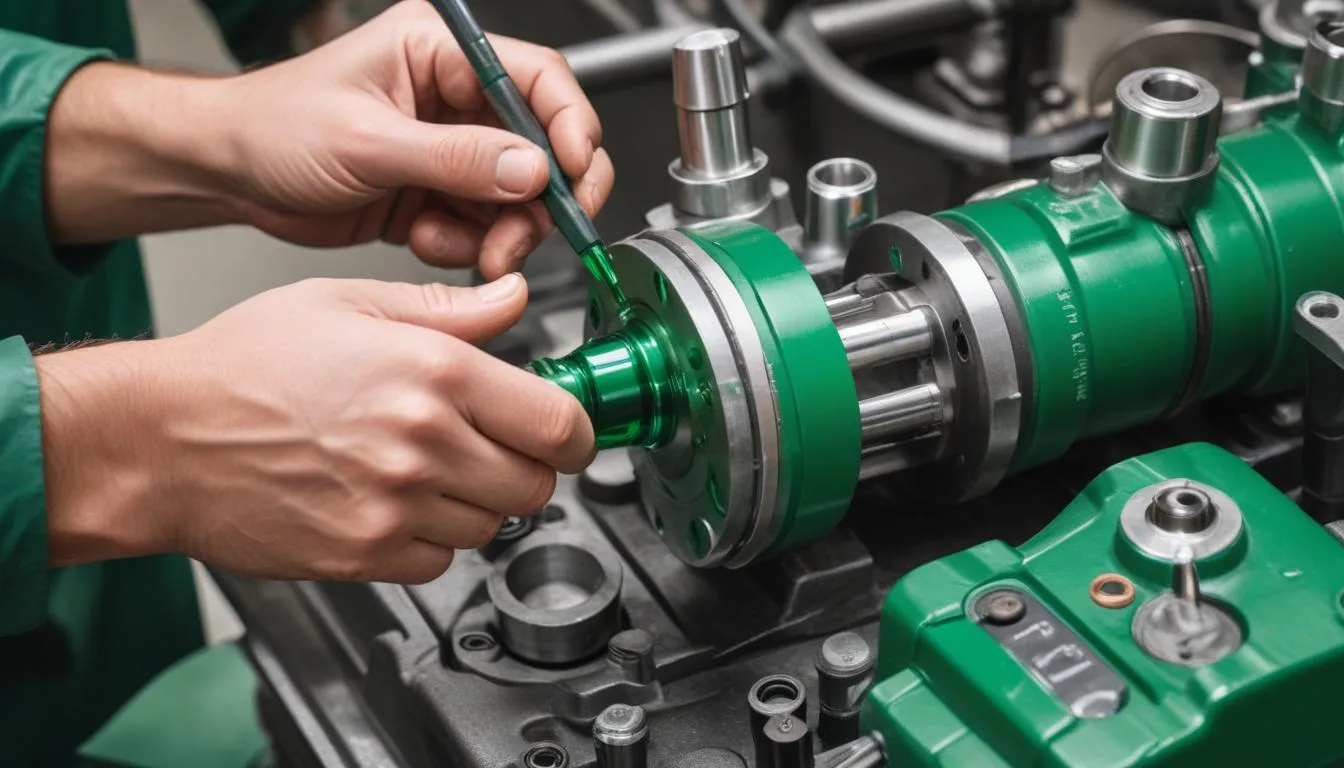 The components of a pump system play a crucial role in achieving optimal performance and efficiency. Understanding these components can significantly enhance the effectiveness of pump optimization efforts.
The components of a pump system play a crucial role in achieving optimal performance and efficiency. Understanding these components can significantly enhance the effectiveness of pump optimization efforts.
- Pumps: The heart of any pump system, pumps are responsible for moving fluid through the system. It’s essential to select the right type of pump (centrifugal, positive displacement, etc.) based on the specific application to ensure optimal efficiency.
- Piping: The pipes that transport the fluid should be appropriately sized and configured to minimize friction losses. Using efficient materials and minimizing bends can enhance overall system performance.
- Valves: Control valves regulate the flow rate and pressure within the system. Selecting high-efficiency valves can prevent unnecessary energy losses and improve the overall efficiency of the pump system.
- Motors: The motor’s role is to drive the pump. Selecting energy-efficient motors and optimizing their operation is vital for maximizing pump performance.
- Instrumentation: Monitoring tools and sensors help assess the system’s performance and efficiency. Implementing real-time monitoring can facilitate timely adjustments and improvements.
The interaction among these components directly influences the efficiency of the pump system. By ensuring compatibility and addressing potential issues such as cavitation, vibration, and pressure drops, operators can enhance the overall functionality. Regular assessments involving flow rates, pressure levels, and energy consumption help pinpoint areas for pump optimization and performance enhancement.
Utilizing advanced design techniques and computational fluid dynamics can yield significant benefits in understanding how each component’s role affects the entire system. Proper system integration and component selection are essential steps in achieving a sustainable and efficient operation.
Assessing system efficiency
To effectively assess the efficiency of a pump system, it is essential to conduct a comprehensive analysis that encompasses various parameters influencing its overall performance. Key factors include energy consumption, flow rates, pressure levels, and the system’s responsiveness to operating conditions.
- Energy Consumption: Monitoring the energy usage of the pump system is critical in evaluating efficiency. This includes analyzing power input versus hydraulic output. Energy audits can help identify discrepancies and excessive power usage, leading to targeted enhancements in pump optimization.
- Flow Rates: Accurate measurement of flow rates is necessary to assess whether the pump is delivering the intended performance. Implementing flow meters can provide real-time data, allowing for adjustments to maintain optimal flow.
- Pressure Levels: Evaluating pressure drop across the system is vital. High-pressure drops may indicate issues such as blockages, excessive fittings, or poorly designed piping layouts. Regular checks can help ensure that pressure is maintained at an optimal level.
- Efficiency Ratios: Calculating the pump’s overall efficiency ratio provides insight into the pump’s performance. This includes the hydraulic efficiency, volumetric efficiency, and overall efficiency—each playing a pivotal role in understanding the pump’s operational efficacy.
By utilizing modern data analysis tools and techniques, operators can benchmark system performance against industry standards. Comparative analysis of similar systems can reveal performance gaps and opportunities for enhancement. Moreover, performing a performance curve analysis will reveal how closely the pump operates under its best efficiency point (BEP), ensuring that it is utilized within its optimal range.
Implementing a systematic approach that combines these assessment metrics creates a foundation for informed decision-making. Regular efficiency audits and the use of performance metrics will guide operators in identifying areas where improvements can be made, thus leading to enhanced performance and reduced operational costs.
In conclusion, rigorous assessment of the pump system’s efficiency is integral to effective pump optimization and ensures that the system operates at its best capacity. Continuous monitoring and proactive adjustments enable operators to maintain high-performance levels while optimizing energy utilization.
Implementing control strategies
To enhance pump system functionality, implementing effective control strategies is essential. These strategies are designed to optimize the performance of the system by regulating various operational parameters. Employing sophisticated control systems can lead to significant energy savings, improved system reliability, and enhanced operational flexibility.
- Variable Frequency Drives (VFDs): VFDs adjust the motor speed according to the flow requirements. By matching pump output with demand, VFDs can dramatically reduce energy consumption, especially in systems where flow varies frequently. This also minimizes wear and tear on components, prolonging their lifespan.
- Smart Control Systems: Advanced control systems that incorporate artificial intelligence and machine learning can analyze data in real time to make immediate adjustments to the system. Such systems can optimize operational parameters based on historical performance data and predictive analytics, leading to enhanced efficiency and reliability.
- Feedback Loops: Establishing closed-loop control mechanisms involving sensors and feedback systems allows for continuous monitoring and adjustment. Sensors measure flow rates, pressure, and other critical factors, enabling the system to maintain optimal performance levels automatically.
- Setpoint Management: Appropriate setpoints for pressure, flow, and temperature must be established and maintained. Fine-tuning these parameters helps prevent over-pumping and under-pumping situations, thus enhancing overall system efficiency.
- Energy Monitoring Systems: Implementing energy monitoring solutions can provide insights into energy usage patterns. This data enables operators to identify inefficiencies and adjust operational strategies for improved performance and reduced energy costs.
Adopting these control strategies typically involves a holistic approach, considering the entire pump system’s operation. The integration of these systems not only boosts energy efficiency but also ensures consistent performance in varying operational conditions.
Furthermore, regular training of personnel on the operation of these advanced controls is vital. Proper hands-on training maximizes the benefit derived from control system investments, ensuring that staff can interpret data and adjust system parameters effectively.
Incorporating predictive maintenance strategies with control systems further enhances reliability. By anticipating potential issues before they escalate, operators can schedule maintenance during non-peak hours, minimizing downtime and maintaining steady performance levels.
The deployment of effective control strategies can transform the dynamics of pump systems, facilitating the achievement of peak efficiency and performance. Through the combination of advanced technology and rigorous management practices, organizations can realize substantial gains in energy savings and operational effectiveness.
Maintenance best practices
 Maintenance of pump systems is critical for ensuring long-term efficiency and performance. Proper maintenance practices not only prolong the lifespan of pump components but also enhance the overall operational effectiveness of the entire system. Implementing structured maintenance routines is essential in preventing unexpected downtimes and costly repairs.
Maintenance of pump systems is critical for ensuring long-term efficiency and performance. Proper maintenance practices not only prolong the lifespan of pump components but also enhance the overall operational effectiveness of the entire system. Implementing structured maintenance routines is essential in preventing unexpected downtimes and costly repairs.
- Regular Inspections: Conducting routine inspections helps identify potential issues before they escalate. Key components to inspect include seals, bearings, and impellers. Regular checks of these components can address wear and tear that may affect the efficiency of the pump system.
- Lubrication: Ensuring that moving parts are adequately lubricated is critical to minimize friction and wear. Utilize the manufacturer’s guidelines to determine the appropriate type and frequency of lubrication for different components within the pump system.
- Cleaning: Dirt and debris can clog pumps and piping, leading to decreased performance. Implement a regular cleaning schedule to remove sediment, algae, and other contaminants that can hinder fluid flow and reduce system efficiency.
- Alignment Checks: Misalignment of pump and motor shafts can lead to excessive vibration and wear. Regular alignment checks using appropriate tools can help maintain proper positioning, minimizing damage and enhancing performance.
- Testing Pressure and Flow: Periodically testing the pressure and flow rates against established benchmarks helps ensure that the pump operates within its optimal range. Discrepancies may indicate issues needing immediate attention to avoid efficiency losses.
- Component Replacement: Identifying components that are nearing the end of their life cycle is essential. Regularly replace worn-out parts, such as bearings and seals, to maintain system reliability and performance.
- Documentation: Maintaining accurate records of maintenance activities, inspections, and repairs ensures that operators can track performance trends and detect anomalies over time. This documentation serves as a reference for future maintenance efforts and helps in the analysis of efficiency.
By prioritizing routine maintenance and establishing a comprehensive maintenance strategy, organizations can significantly enhance the longevity and performance of pump systems. Additionally, integrating predictive maintenance technologies can offer advanced insights into equipment health. These technologies leverage data analytics to predict failures before they occur, allowing maintenance to be performed at optimal times and further boosting system efficiency.
Planning maintenance activities during off-peak hours can minimize disruptions to production and enable a smooth workflow. Engaging trained personnel to perform maintenance work ensures that tasks are executed correctly and efficiently, maximizing the benefits of maintenance practices.
Overall, adopting best maintenance practices is a fundamental aspect of achieving optimal pump system performance. By ensuring that systems are regularly serviced and monitored, operators can sustain high-efficiency levels and reduce both operational costs and energy consumption.
Evaluating performance metrics
To comprehensively evaluate performance metrics in pump systems, several key indicators should be systematically monitored and analyzed. These metrics provide critical insights into how efficiently and effectively a pump system operates. The following performance indicators are essential for assessing and optimizing pump performance:
- Flow Rate: The flow rate indicates the volume of liquid the pump can move per unit of time. Regular measurement of this metric helps ensure that the pump is delivering the required flow for system operations and can also highlight potential blockages or inefficiencies.
- Pressure Differential: Monitoring the pressure differential across the pump provides insights into pump performance. A significant increase in pressure drop can signal wear, misalignment, or impeller issues, all of which can affect pump efficiency.
- Energy Usage: Keeping track of energy consumption is vital for evaluating performance. By comparing energy input against hydraulic output, operators can identify opportunities for pump optimization and reduce operational costs through energy efficiency improvements.
- Efficiency Ratings: Calculating system efficiencies, including hydraulic and volumetric efficiency, allows operators to benchmark performance against optimal levels, identifying opportunities for enhancements and ensuring that pumps are functioning at their best.
- Run Time Analysis: Analyzing the run time of pumps provides insights into operational patterns. Excessive run times can indicate inefficiencies, while regular assessment can help identify peak demand periods and adjust operations accordingly.
- Maintenance Records: Keeping detailed records of equipment maintenance, repairs, and any performance anomalies ensures that historical data is available for trend analysis, aiding in future predictive maintenance efforts and performance evaluations.
Implementing a detailed framework for regular monitoring of these performance metrics allows for a proactive approach to managing pump systems. Utilizing tools such as data analytics software can automate the collection and analysis of these metrics, providing real-time insights that can lead to rapid adjustments and improvements.
| Performance Metric | Importance | Tools for Measurement |
|---|---|---|
| Flow Rate | Ensures required liquid delivery; prevents blockages. | Flow Meters |
| Pressure Differential | Indicates performance issues; aids in maintenance decisions. | Pressure Gauges |
| Energy Usage | Identifies inefficiencies; helps reduce costs. | Energy Monitors |
| Efficiency Ratings | Benchmarks performance; highlights optimization opportunities. | Efficiency Calculators |
| Run Time Analysis | Identifies operational patterns; aids in scheduling. | Operational Logs |
| Maintenance Records | Tracks historical performance; informs predictive maintenance. | Maintenance Management Systems |
By focusing on these performance metrics, organizations can ensure a thorough understanding of their pump systems, facilitating targeted improvements. A data-driven approach enables operators to recognize inefficiencies, implement timely interventions, and achieve greater overall performance. Continuous evaluation and adjustment of these parameters are crucial for maintaining optimal operation, ultimately driving improvements in both performance and efficiency.